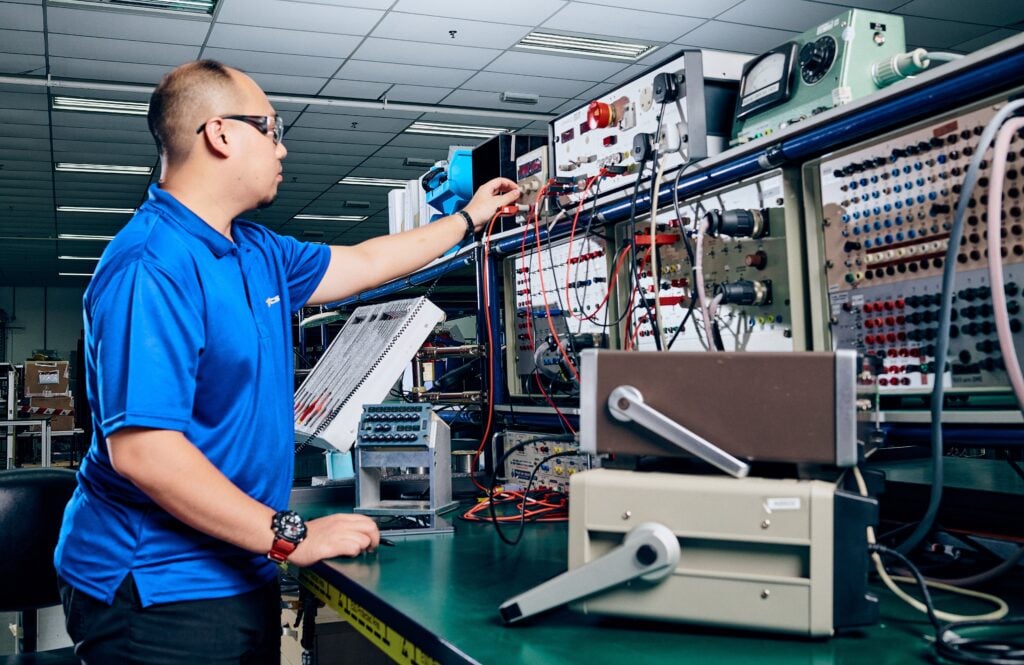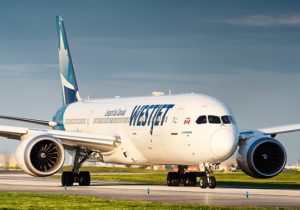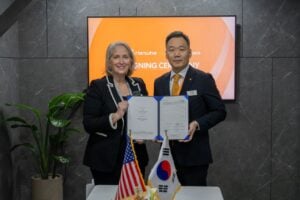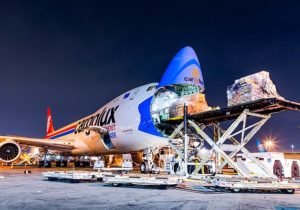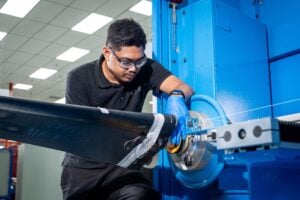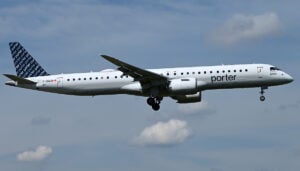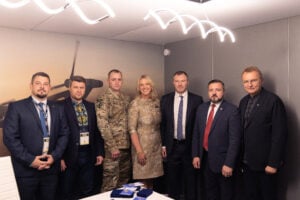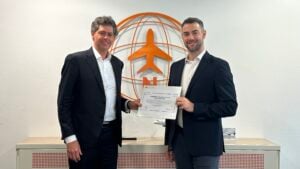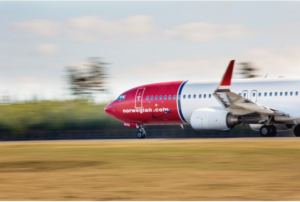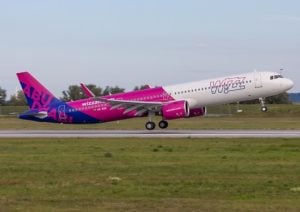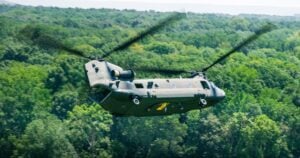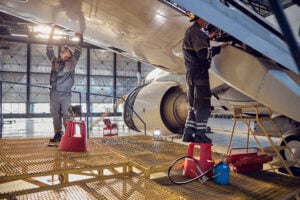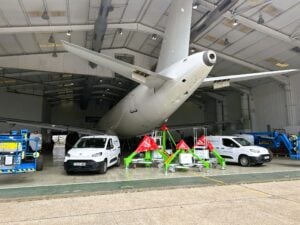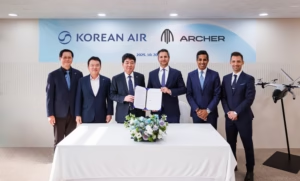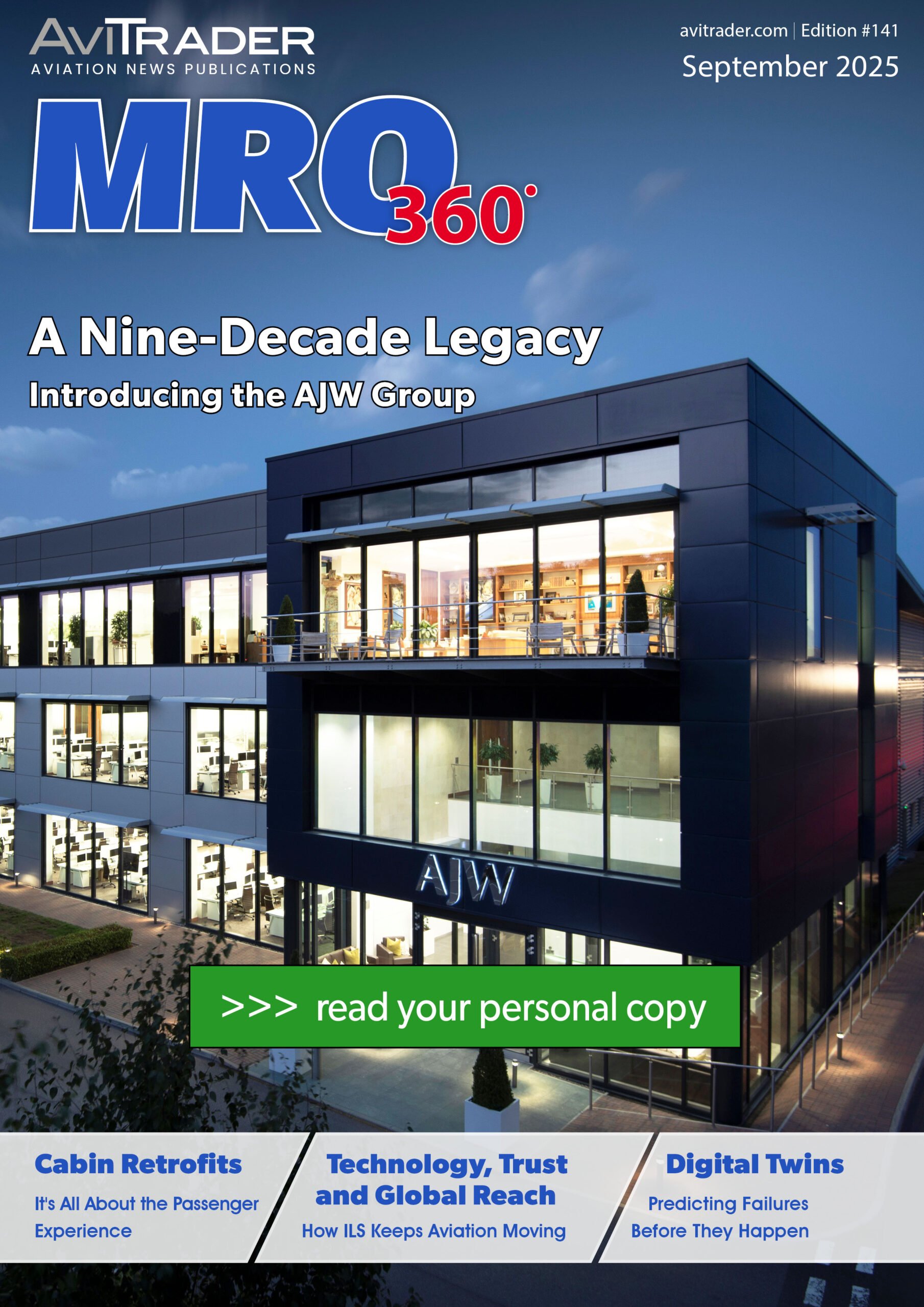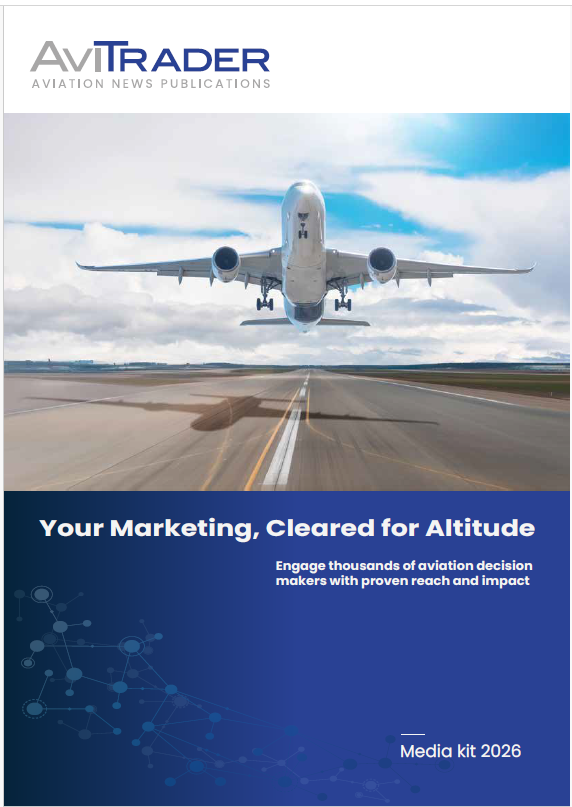There are many situations where the use of Original Equipment Manufacturer (OEM) parts make little financial sense. In addition, the quality of OEM parts is such that the lifespan of some are appreciably longer than others, so when an aircraft or engine reaches the end of its serviceable life, that does not automatically mean that all of the parts are no longer usable and instead many of them are used to feed the USM marketplace. ‘Recycling’ of these parts makes perfect sense from both a sustainability as well as a financial perspective. However, the rules and regulations that have to be complied with, the hoops that have to be jumped through, before a used part can end up on the shelf of an MRO business are complex and comprehensive in the extreme. They have to be as the safety of aircraft passengers and crew is paramount.
We decided to approach nine leading companies connected to aircraft MRO to find out what steps they take with regard to establishing the airworthiness of USM.
What regulations (e.g., EASA, FAA) currently govern the use of used serviceable aircraft material?
The European Union Aviation Safety Agency (EASA) governs used serviceable aircraft material (USM) through its Part-145 (for maintenance organisations) and Part-M (for continuing airworthiness management) regulations, specifically with guidance for components removed from serviceable aircraft and the issuance of an EASA Form 1. Alison Williams, Quality Engineer at AerFin notes that, in addition, “In the US, the Federal Aviation Administration regulates this through its regulations, which are referenced within the EASA framework via bilateral agreements on continuing airworthiness. In short: EASA Form 1 and FAA Form 8130-3 are the critical documents for USM, ensuring traceability and regulatory compliance. No regulator allows “untraceable” used parts — everything must be documented, certified, and compliant with airworthiness requirements.” Nigel Bedford, Technical Director at AJW Group adds that: “Since Brexit, the UK CAA has also established its own framework, which is closely aligned. In practice, most operators and MROs look for dual-release certification, an FAA Form 8130-3 or an EASA Form 1, to ensure material can move seamlessly across borders. Beyond the regulators, global standards from ICAO and accreditations like ASA-100 or AS9100 also play a big role in setting the benchmark for safe use of USM.”
To expand further, Kevin Flynn, Sr. Director of Quality and Operations at VAS Aero advises that: “In the U.S., the Federal Aviation Administration (FAA) requires that USM must meet airworthiness standards under 14 CFR Part 43 for Maintenance, Preventive Maintenance, Rebuilding and Alterations of components, Part 145 also relates by regulating Maintenance Organizations that handle, inspections and recertification of Used Serviceable material USM and FAA AC 21-29 for the detection of reporting of Suspected Unapproved parts. Lastly oversight comes from the Internation Civil Aviation Organization, ICAO standards that ensure global consistency in the safe reuse of aircraft components.” Of course, not everything is that simple and straightforward. As Daniel Koehler, Head of Commercial, Asia Pacific Aircraft component Services Sdn Bhd at APACS tells us, “…acceptance can vary depending on the operator’s country of registration. For example, in China and Japan, operators often do not accept EASA- or FAA-only certifications if the certifying repair station is located outside of Europe or the United States. For airlines this means a tedious review of paperwork but still brings a lot of savings compared to the material in new condition by the OEM.”
For some operators, compliance with regulations is not enough, preferring to include in-house traceability systems. Lauren Reardon, Repair Teams Lead at EirTrade Aviation explains: “As a supplier of USM, EirTrade ensures the highest quality standards of all our material. It is vital to us that our inventory comes with approved release certificates, including EASA, FAA and CAAC. In addition to this, we have dedicated teams responsible for ensuring the highest standard of technical paperwork and back-to-birth traceability. High standards of technical paperwork is something that we guarantee to our customers, and any material being purchased or sold by EirTrade undergoes a detailed technical review process to ensure this.” To a degree, the same applies to FL Technics, as Arūnas Ganiprauskas, Head of Procurement and Products Unit tells us: “To prevent Suspected Unapproved Parts (SUP) from entering the supply chain, we follow strict policies set by both authorities. We source exclusively from approved suppliers with valid release certificates and maintain close attention to regulatory alerts about bogus parts. Used serviceable material plays a vital role in aviation maintenance, and our multilayered verification process ensures every part we handle comes from authorised maintenance channels and carries proper airworthiness certification.”
Of course, MROs work in a constantly changing environment where every so many new technological advancement can or could be applied to the commercial aircraft industry. As an example, Pascal Parant, Chief Commercial & Marketing Officer at the Vallair Group tells us that: “Some companies are currently exploring blockchain systems to enhance traceability of parts. However, these initiatives cannot realistically apply to existing fleets, and if such a system were to emerge, it would need to be universal, certified, and implemented on new aircraft programs – since retrofitting this type of traceability is almost impossible.” Perhaps Valbon Ebibi, Head of Operations at Werner Aero encapsulates all of the above in three core requirements mandated by both the FAA and EASA: “Certification: Every piece of USM must come with proper certification attesting to its airworthiness. This certification is essential to verify that the part has been appropriately inspected, tested, and approved for reuse. Traceability: Each component must be traceable back to its original source and maintenance history. This process ensures transparency and accountability, allowing for comprehensive tracking throughout the part’s lifecycle. Proper Documentation: Comprehensive and accurate documentation must accompany all USM. This documentation serves to confirm compliance with regulatory standards and supports maintenance records required by aviation operators.
What steps are involved in certifying that used parts are safe to return to service?
The Component Maintenance Manual is a common theme highlighted by Nigel Bedford, Daniel Koehler and Kevin Flynn. “When a part comes into our facility, it goes through a structured process to make sure it’s fully compliant and safe to go back into operation. Our engineers and technicians start by performing a detailed incoming inspection and conformity check, followed by evaluation against the Component Maintenance Manual. Depending on the component, non-destructive testing and functional checks may also be carried out, and any required restoration work is done strictly to approved data,” Bedford advises, while Koehler points out that: “Certification of used parts is always based on the relevant and current Component Maintenance Manual (CMM). Any deviation from the CMM must be clearly noted on the release certificate (block 12). This detail is important for buyers, as small remarks in the certificate may indicate that DER repairs were applied, which some operators may not accept. Document review is therefore critical. Once a shop certifies the part in accordance with the CMM, it confirms that all manufacturer-required inspections and tests have been completed.” Lastly, Kevin Flynn tells us that “Certifying that used parts are safe for return to service, particularly in a heavily regulated industry like aerospace involves documented processes to ensure safety, quality, and compliance. Regulatory requirements such as 14 CFR Part 43 and other publications, the CMM Component Maintenance Manual as examples outline the required processes to ensure the proper inspections, testing, repairs and recertification are completed to those regulations, requirements and instructions.”
Lauren Reardon at EirTrade Aviation provides us with a five-point checklist that covers EirTrade’s operational procedures: 1. Documentation Verification – All relevant documentation, including traceability records and certification forms (e.g., FAA Form 8130-3 or EASA Form 1), must be reviewed to ensure compliance with regulatory requirements. 2. Inspection – The part undergoes a thorough inspection to assess its physical condition and verify conformity with applicable specifications and maintenance manuals. 3. Repair or Overhaul (if required) – If any discrepancies are found, the part is sent to an approved repair station for necessary repairs or overhaul in accordance with FAA or EASA-approved procedures. 4. Airworthiness Certification – Following successful inspection or repair, an airworthiness release certificate is issued by the certified repair station, confirming compliance with all applicable FAA/EASA regulations, and finally, 5. Quality Assurance and Traceability – Final quality checks are performed, and full traceability of the part is confirmed. Once these steps are completed, the part is deemed airworthy and cleared for return to service.
Alison Williams sees that certifying used parts for service through a similar lens, indicating that it involves initial inspection and assessment, repairs following manufacturer and regulatory guidelines, thorough testing, and obtaining necessary certifications or documentation such as a detailed maintenance record. She adds: “The process ensures the part is accurately identified, has no hidden damage, meets performance requirements, and has a complete, verifiable history.” At APOC Aviation, Craig Skilton refers us to the skills of the in-house MRO team as he advises that: “Strict regulations exist to ensure that used serviceable materials (USM) are safe to return to service. Fortunately, APOC has an MRO team with extensive knowledge and experience, who carefully select and review our approved workshops when it comes to certifying our parts. Using partners we can trust is imperative to ensuring reliability and MRO efficiency. A thorough inspection is done post repair, along with a full trace paperwork check, both of which ensure that the part is fully ready to return to service.”
For some, the beginning of the ‘paper trail’ for USM begins with the tear-down of an aircraft, so their role in certifying parts are safe to return to service are going to be different to MRO operators who are solely involved in the use of USM during operational procedures. As an example, Arūnas Ganiprauskas gives us an insight into what happens at FL Technics: “For us, proper certification is fundamental to aviation safety. We begin by creating a complete trail of all identifying information – part and serial numbers, reason for removal, and where applicable, hours and cycles – with particular attention to Life-Limited Parts (LLPs). This thorough documentation ensures each part’s history is fully traceable. Next, we verify that Part-145-approved repair stations have performed detailed inspections, including visual and dimensional inspections, Non‑Destructive Testing (NDT), functional or bench testing, and, if required, repair or overhaul in accordance with the documentation. Compliance with Airworthiness Directives (ADs) and Service Bulletins (SBs) is confirmed, and software or modification status is reconciled. Parts with incomplete history or exposure to extreme conditions receive additional scrutiny; if gaps cannot be resolved, the part is rejected. After inspection and necessary work, if the part meets standards, every action is documented, and the component is released on an authorized certificate. The certificate – EASA Form 1 in Europe or FAA Form 8130‑3 in the U.S., often as a dual release for both systems – references the work performed and data used, serving as evidence of airworthiness and installation eligibility. This process ensures only verified, documented parts are approved to return to service.”
Pascal Parant provides a valuable insight where he refers to the situation regarding a complete engine: “For complex components such as engines, the process includes MPA (Maintenance Program Analysis), borescope inspections, and certification based on available trace documentation. In case of a full engine teardown, each removed part is inspected, tested, repaired, or overhauled, and repair shops ensure that no item appears on any blacklist file. I recall a global alert issued after a Boeing 757 crash where engines had disappeared. A full list of serialised parts was circulated worldwide. Any shop that came across one of those parts had to immediately remove it, quarantine it, and notify the FAA. Ultimately, certifying a USM part relies on rigorous traceability checks and processing by established, approved repair stations. That combination is the real warranty of quality.” To conclude this section, Valbon Ebibi provides concise advice, especially when it comes to LLPs: “… compliance with applicable Airworthiness Directives (ADs) and Service Bulletins (SBs) must be carefully assessed to ensure the part meets current regulatory mandates. Special attention should be given to life-limited components; verifying that the part has not exceeded its established usage limits is critical to maintaining safety and compliance.”
How do you verify the authenticity and origin of parts to avoid counterfeit risks?
The risk of counterfeit parts entering into the MRO supply chain was highlighted with the incident back in 2023 involving London-based AOG Technics. The company has been accused of selling uncertified, potentially used, parts for CFM56 and CF6 aircraft engines between 2019 and 2023, falsifying documentation to conceal their true origin and condition. It was as a result of the thorough working practices of technicians at Portuguese airline TAP Air Portugal and one inspector. As Patrick Parant reminds us: “He noticed irregularities in the way an 8130 form was issued compared with the OEM’s usual practice. Acting on his instincts, he contacted the OEM, who confirmed they had never manufactured the part. This ultimately revealed a criminal case involving AOG Technics – the worst example of counterfeit USM in recent years. Aside from financial damages, such cases expose individuals for up to ten years of prison time.”
We wanted to know a little more about the measures taken to verify the origin and authenticity of parts to eliminate the risk of counterfeiting. Daniel Koehler is quite blunt when he tells us that: “The best way to verify authenticity is to ensure traceability back to the last operator. This includes full commercial records, usage history, and a Non-Incident Statement (NIS) confirming the part was not involved in an accident. For life-limited parts, the requirements are stricter: full back-to-birth traceability must be provided, including the original certificate of manufacture. Without this, the part cannot be accepted.” Craig Skilton touches on the topic of blockchain technology that Pascal Parant brought up earlier, advising that: “The majority of APOC’s acquisitions are done at an airframe level and traceability is thoroughly reviewed at the point of purchase, which helps to verify the authenticity of the materials. In most cases these reviews do not trace back to the origin, but we ensure all the appropriate checks are carried out. Going forward, we’ve begun to explore the possibilities of blockchain and are very open to the concept when it comes to part traceability and tracking. However, there is still a long road ahead as for it to become viable it needs mass adoption.”
According to Niall Smyth, “EirTrade uses several methods to ensure the authenticity of our stock. Prior to disassembly or purchasing parts, the available technical and commercial trace paperwork is reviewed by the Technical Department to verify the history of the components back to the last operator or back to birth in the case of LLPs. This would include documents such as the accident/incident clearance statement, removal tags, maintenance history and the certificates of release to service. The supplier of the part or MRO repairing the part would have been approved the by Quality Department in line with the approved supplier procedures. Upon receipt of the part, it is thoroughly examined by our Goods In Inspectors who will verify the condition, accompanying documents, and compare it to previous units or the IPC as required. Our Goods In Inspectors will have received Suspected Unapproved Parts training on starting in their role, and regular refresher training.” To further underline the complexity and thoroughness of the verification process, Arūnas Ganiprauskas runs through the process at FL Technics: “Our first line of defence is thorough documentation review: each part must arrive with proper certification – EASA Form 1 or FAA Form 8130-3 and for Hard Time (HT) and Life-Limited Parts (LLPs), complete traceability records showing operating history, life limits, and compliance with Airworthiness Directives (ADs) and Service Bulletins (SBs). We crosscheck all serial numbers and documentation against industry databases and our internal systems, looking for any inconsistencies. When we spot mismatched numbers, unusual formatting, or unfamiliar issuing organizations, the part is immediately quarantined for investigation. Beyond documentation, we carefully vet our sources. We only purchase from suppliers who have passed our internal evaluation procedure based on EASA requirements and demonstrated robust quality systems. Upon arrival, parts undergo thorough inspection according to our receiving procedures – we verify identification features against technical documentation and perform required physical inspections. Our teams receive regular training on counterfeit detection methods, combining experience with latest technology. This “trust but verify” approach – strong suppliers, strong paperwork, and strong inspections – ensures only genuine, safe parts enter our inventory.”
If it hasn’t already become apparent to you, there is a mountain of paperwork and regulations involved with USM, further underlined by Kevin Flynn: “At VAS, we stress full compliance with the US Federal Aviation Administration’s Suspected Unapproved Parts (SUP) program and FAA AC AC21-29 to assure that no unauthorized or counterfeit parts are accepted by VAS, and all employees are trained to a Speak Up culture to strengthen our internal program. To effectively verify aircraft parts and avoid counterfeit risks, documentation checks, physical inspections, part markings, documentation consistency, supplier surveillance and inspection training and awareness are key elements to a robust SUP’s counterfeit parts programme. In addition, downstream suppliers’ compliance through the KYS Know Your Supplier screenings, maintaining industry certifications such as FAA, EASA, ISO, AS / EN 9100 series and ASA 100 FAA AC0056B Standards as examples including continual supplier performance reviews help in mitigating any possible parts from entering the supply chain.” At Werner Aero they tackle the challenge on three fronts, as Valbon Ebibi explains: “1). Control Your Supply Chain – Purchase only from Original Equipment Manufacturers (OEMs) or their authorised distributors certified by industry bodies such as the ASA. Regularly audit your suppliers and qualify them based on quality controls and provenance, rather than price alone. 2). Verify Documentation – Scrutinise all paperwork upon receipt, including FAA Form 8130-3, EASA Form 1, and TCCA Form One. Ensure Certificates of Conformance trace back to the original manufacturer and review detailed service records. Be alert for incomplete or altered documents and maintain full traceability, especially for life-limited parts. 3). Conduct Physical Inspections – Perform thorough visual inspections of packaging and markings to detect inconsistencies such as poor-quality printing or mismatched serial numbers that may indicate counterfeit parts.”
One has to question with the advancements in modern technology though, whether there will ever be a substitute for the human eye. This is highlighted by Alison Williams who runs through part of the process at AerFin: “To verify parts and avoid counterfeit risks, we thoroughly inspect packaging and parts for spelling errors, poor quality and incorrect logos. We check for discrepancies in serial numbers and date codes. Beyond visual checks, we conduct thorough supplier audits to ensure our supply chain is trustworthy and includes authorised distributors that can provide certificates of authenticity and traceable documentation. Our warehouse operatives and other front facing staff conduct a no fail Suspect Unapproved Parts (SUP) course. If we encounter potentially counterfeit parts, we remove them from the supply chain, quarantine them, and contact the original manufacturer for assistance and guidance. A quality concern is raised so the Quality Team can be part of any investigation. If a price seems too good to be true, it likely is. Low prices are a common indicator of counterfeit products and forms a key part of the SUP training.” Of course, there are different procedures instigated by MROs and carriers depending on the nature of the work and operating procedures. Nigel Bedford gives us a brief rundown of the processes at AJ Walter: “Counterfeit parts are one of the biggest risks to aviation safety, which is why we put so much focus on getting this right. It starts with the paperwork: we check certificates of conformity, maintenance history and, where required, back-to-birth records for life-limited parts. Just as important is who we buy from, so we only source through trusted, approved suppliers with the right industry accreditations. We also carry out physical checks on markings and serial numbers, and we’re making greater use of digital tools and track-and-trace technology to give our customers complete confidence in where a component has come from.”
How is traceability managed to satisfy airworthiness requirements?
Both operators and aircraft owners bear responsibility for ensuring accurate and complete traceability records. For lessors, proper documentation is essential to protect the residual value of their assets. From “birth” to end-of-life, all serialised and critical parts must be tracked through their entire lifecycle. Operators must also certify that parts have not been involved in accidents or incidents, typically through an ATA 106 form. If a part has been involved, it can only be returned to service once the OEM has inspected, repaired, and confirmed its airworthiness. In practice, this means that every detail counts. Are the documents consistent with the way the OEM issues 8130 certificates? Was the part operated under an FAA Part 121 airline or an EASA-approved operator? Are all entries coherent? As Patrick Parant at Vallair further explains: “Today, most traceability is handled electronically. This is why some players advocate for blockchain as a solution to guarantee authenticity of OEM material. But again, this would require universal adoption and standardisation – something the industry is still far from achieving.”
In reality, traceability is critical to maintaining the highest standards of safety and reliability. It guarantees that each component used in an aircraft has a verifiable history, thereby protecting against the risks posed by counterfeit parts and enabling prompt corrective actions should a defect be identified. At Werner Aero Valbon Ebibi identifies three key mechanisms for managing traceability: “1). Regulatory Oversight – Aviation regulatory authorities, including the Federal Aviation Administration (FAA) and the European Union Aviation Safety Agency (EASA), set forth core requirements that govern traceability. Some notable regulatory frameworks include: – FAA Advisory Circulars: Specifically, AC 20-154 offers comprehensive guidance on how to verify that a part was manufactured in compliance with Part 21 or has been previously determined to be airworthy under Part 43. – EASA Part-M and Part-145: These regulations obligate maintenance organizations to implement procedures that verify the traceability of parts and materials sourced from approved entities. – AS9100 Standard: This industry-specific quality management standard, grounded in ISO 9001, enforces strict traceability standards, particularly for safety-critical components. 2). Component Identification – Each aircraft component is assigned a unique identifier serving as the cornerstone of its traceability record. Identification methods include: – Unique Marking: Permanent marks such as serial numbers, batch codes, or part numbers are applied to link the part directly to its manufacturing and maintenance background, – Barcodes and RFID Tags: To enhance tracking efficiency and minimise human error, many organisations employ automated identification technologies like barcodes and radio-frequency identification tags. 3). Documentation and Record-Keeping – Accurate and comprehensive documentation forms the foundation of effective traceability, encompassing both physical and digital records. This documentation chronicles each component’s lifecycle from manufacture through inspection, installation, and maintenance activities.” He then concludes: “… the aviation industry’s commitment to traceability is manifested through a robust combination of regulatory compliance, advanced component identification, and meticulous documentation. These practices collectively uphold the integrity and safety of aircraft systems.”
At AJ Walter, Nigel Bedford succinctly advises that: “Traceability underpins everything we do in maintaining airworthiness. For each component, we make sure records are complete and up to date, covering operational history, service bulletins, airworthiness directives, and any modifications. Those records are stored digitally, which allows us to maintain full configuration control and respond quickly to audits,” adding that: “For life-limited and other critical components, we also maintain back-to-birth traceability as a matter of course. This isn’t just a regulatory requirement; for operators and lessors it’s also a commercial necessity, particularly when it comes to lease returns and fleet transitions.”
Alison Williams at AerFin Ltd., Daniel Koehler at APACS and Niall Smyth at EirTrade Aviation are all proponents of “back-to-birth” records. As Williams explains: “Traceability for airworthiness is managed by maintaining detailed life cycle documentation for every part, including its origin, manufacturing details, and maintenance history, often using unique identifiers such as serial numbers. This system ensures compliance with safety regulations by providing complete “back to birth” records for parts and verification of their condition, quality and certification through documented procedures and receiving inspections. We record all maintenance actions and repairs performed, as well as documenting its fitment onto an aircraft engine. A comprehensive record is kept, linking all relevant documents and information to the part’s identifier. This includes: Supplier certifications, manufacturing details, maintenance and repair logs, inspection records, and life-limited part (LLP) data, such as certified hours and cycles,” concluding that: “This entire process ensures that all parts meet the stringent safety and quality standards set by aviation regulatory bodies like the FAA and EASA, guaranteeing compliance with airworthiness requirements.” Where Daniel Koehler is concerned: “Traceability is managed through strict documentation at every stage of a component’s lifecycle. Each part must carry a continuous record, from its original manufacture through all subsequent operators, repairs, modifications, and inspections. This documentation—such as airworthiness release certificates, NIS, shop visit reports, and life-limited part logs—forms the backbone of airworthiness compliance. For life-limited parts in particular, “back-to-birth” records are non-negotiable. For standard components, ensuring full trace to the last certified release is sufficient, but any gaps in traceability typically result in outright rejection by the buyer or regulator.” Finally, Niall Smyth explains the system at EirTrade: “Prior to making a purchase of an aircraft, engine, or material, EirTrade’s technical records team will conduct a technical record review to ensure that the paperwork provided, meets our company’s required standards before being placed on an aircraft/engine. Depending on the unit(s), there will be a requirement for different documentation, both from a technical and commercial standpoint, and EirTrade strive to consistently provide the best quality paperwork. There are more detailed, specific requirements for units which have life limitations, such as engine LLPs, Landing Gears and APUs. When purchasing these components, the market demands full back to birth traceability, from the day it was manufactured, right up until the current status of the unit. The industry requirements continue to change and grow as new safety regulations get introduced, and with that comes different requirements from customers for paperwork. We try to adapt to this as soon as possible to in order to fulfil our customers’ needs.”
For Arūnas Ganiprauskas, traceability is non-negotiable. He further explains “We accept components only when accompanied by a complete, verifiable history and proper release documents – at minimum an EASA Form 1, FAA Form 81303 or equivalent. For Hard Time (HT) and Life-Limited Parts (LLPs), we verify full traceability, including cycles/time since new and since last overhaul; if that history is missing, we will not use or supply the part. Even for non-life-limited parts, we maintain this absolute standard—any gaps in paperwork or unclear maintenance history are grounds for rejection. We verify that every inspection, overhaul, and modification is properly documented by approved organizations, allowing us to prove the part’s configuration and condition at any point in its life. Our review includes removal tags and non-incident statements to confirm where a part came from and under what circumstances. If a part doesn’t have a clean, transparent trail from a trusted source, it doesn’t enter our stock—and it certainly doesn’t go back on an aircraft.”
What do buyers have to consider when sourcing used serviceable material?
You will discover that in various guises and varying operational procedures, that compliance, traceability, and source credibility are the non-negotiables. Beyond that, buyers balance cost, availability, and lifecycle value. Alison Williams explains the procedure at AerFin: “When sourcing used serviceable material, we prioritise the quality and condition of the part, ensuring it meets operational standards and has a proper maintenance history to guarantee reliability and safety. We also verify the supplier’s legitimacy and documentation to avoid counterfeit parts, consider the value for money beyond the purchase price, and ensure the material is available for the required timeframe. We request complete records, such as maintenance logs and certifications, to verify the part’s history and serviceability, and we thoroughly inspect all material for wear, damage or any functional issues prior to purchase.” Nigel Bedford at AJ Walter points out that: “In the end, sourcing USM is about striking the right balance between safety, compliance, lead-times, and cost efficiency,” before further detailing that “For buyers, the first question is always whether the certification provided will be accepted in the jurisdictions where the aircraft operates. From there, it’s important to consider the actual condition of the part, whether it’s sold as removed, serviceable, or overhauled, because that has a direct impact on cost, reliability, and turnaround time. Buyers also need to think about risk and commercial terms, such as warranty coverage, insurance, and the credibility of the supplier. Increasingly, airlines and lessors are also factoring in how USM fits into their longer-term support models, whether that’s through a PBH programme, an engine lease or integrated supply chain support.”
At APACS, Daniel Koehler acknowledges that buyers must weigh multiple factors beyond just price, before expanding: “Documentation and traceability are critical, as incomplete records can render an otherwise serviceable part unusable. Regulatory acceptance is another key consideration—parts certified under EASA or FAA may not be accepted by all operators, depending on their national aviation authority’s policies. Additionally, buyers must assess whether parts have been repaired in accordance with CMM requirements, and whether DER or PMA alternatives align with their internal policies. Finally, lead time, warranty terms, and the reputation of the supplier all play a role in minimising operational and financial risk. In practice, due diligence in vendor selection and document verification is just as important as the physical condition of the part itself.” Arūnas Ganiprauskas points out that at FL Technics, certification is non-negotiable, as they never accept a part without a valid EASA Form 1 or FAA Form 8130-3. For Hard Time (HT) and Life-Limited Parts (LLPs), they demand complete records of hours/cycles since new and since last overhaul. Every part must have a full traceability package – maintenance records, log cards, and non-incident statements. Without these documents, they consider the part unusable, regardless of its potential value. He then adds: “Source reputation and commercial traceability are equally critical. We select suppliers only after they pass our internal assessment, which follows EASA regulations and confirms their quality system. Our verification process includes mapping the complete chain of ownership using specialised tools to identify any gaps, inconsistencies, or potential compliance risks. We scrutinize for document errors, ownership breaks, and even check for sanction exposure risks. Beyond documentation, a part’s condition – whether overhauled, repaired, or “as removed” – affects cost considerations. Buyers must consider total cost, including shipping, duties, and potential shop visits, not just the purchase price. Our approach is straightforward: unless a part is certified, fully traceable, and from a trusted source, it doesn’t enter our system. When these requirements are met, used serviceable material provides a safe, cost-effective solution for keeping fleets flying.”
Pascal Parant at Vallair sums it up in a nutshell. “The first question is: who is selling? Established companies with robust quality-control systems are inherently safer partners.” He then goes on to warn that: “Buyers should also be cautious of “too good to be true” deals. For trustworthy companies, the reputational risk of handling questionable parts far outweighs any short-term profit. A solid reputation takes decades to build, and one mistake can land you on the front page of the newspapers.” He adds that: “Due diligence is key. Engage in thorough KYC (Know Your Customer/Supplier) processes, often validated by legal counsel. And if there is any doubt – walk away.” Over at VAS Aero Services, Kevin Flynn is keen to point out that traceability is critical, while underlining perhaps one of the most important aspects: “A supplier and buyer have responsibility to the industry that approved and certified suppliers are used whether purchasing repair services or direct procurement component to avoid counterfeit or non-compliant components.”
Ebibi Valbon at Werner Aero perhaps concludes this topic very concisely: “… sourcing USM demands a comprehensive approach that prioritises traceability, proper certification, and strict regulatory compliance, alongside evaluating supplier credibility and part condition. Adhering to these principles will ensure the safety and reliability of aircraft operations.”

